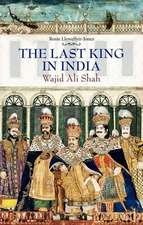Chinese Spatial Strategies: Imperial Beijing, 1420-1911
Autor Jianfei Zhuen Limba Engleză Hardback – 27 noi 2003
Preț: 768.82 lei
Preț vechi: 1105.48 lei
-30% Nou
Puncte Express: 1153
Preț estimativ în valută:
147.11€ • 153.30$ • 121.81£
147.11€ • 153.30$ • 121.81£
Carte tipărită la comandă
Livrare economică 03-17 aprilie
Preluare comenzi: 021 569.72.76
Specificații
ISBN-13: 9780415318839
ISBN-10: 0415318831
Pagini: 296
Dimensiuni: 156 x 234 x 22 mm
Greutate: 0.71 kg
Ediția:1
Editura: Taylor & Francis
Colecția Routledge
Locul publicării:Oxford, United Kingdom
ISBN-10: 0415318831
Pagini: 296
Dimensiuni: 156 x 234 x 22 mm
Greutate: 0.71 kg
Ediția:1
Editura: Taylor & Francis
Colecția Routledge
Locul publicării:Oxford, United Kingdom
Public țintă
PostgraduateNotă biografică
Jianfei Zhu teaches Architecture in the Faculty of Architecture, Building and Planning at the University of Melbourne, Australia. He has published on imperial Beijing and modern Chinese architecture. His work explores conditions of space in late imperial and modern China, and searches a possible dialogue between Western social theory and Asian architectural experience.
Cuprins
List of figuresAcknowledgementsIntroduction: Beijing as a Critical ProblemIn Search of a Chinese SpaceOutline of the Research and the ArgumentA Note on Method1. A Geo-Political Project2. City Plan as IdeologyA Classical TraditionNeo-Confucianism3. Social Space of the CityA City of CitiesSpace of the StateSpace of SocietyConcluding Notes 1: Architecture of the City and the Land4. A Sea of Walls: The Purple Forbidden Palace5. The Palace: Framing a Political LandscapeThe Inner Court as a Corporeal SpaceThe Outer Court as an Institutional SpaceA Composition of Forces6. The Palace: a BattlefieldFlows of Reports and DirectivesDefenceRecurring Crises7. Constructs of AuthorityLegalism and The Art of War Vis-a-vis the Panopticon: Two Ages of ReasonConcluding Notes 2: Architecture as a Machine of the State8. A Religious DiscourseComposing and Building the DiscoursePerforming an Ideology9. Formal Compositions: Visual and ExistentialBeijing as a ScrollVis-a-vis 'Cartesian Perspectivalism': Two Ways of SeeingConcluding Notes 3: Architecture of HorizonAppendix: dynasties, reigns and emperorsNotesBibliographyIndex
Descriere
Presents a study of social spaces of the capital of Ming Qing China (1420-1911). Focusing on early Ming and early and middle Qing, it explores architectural, urban and geographical space of Beijing.















